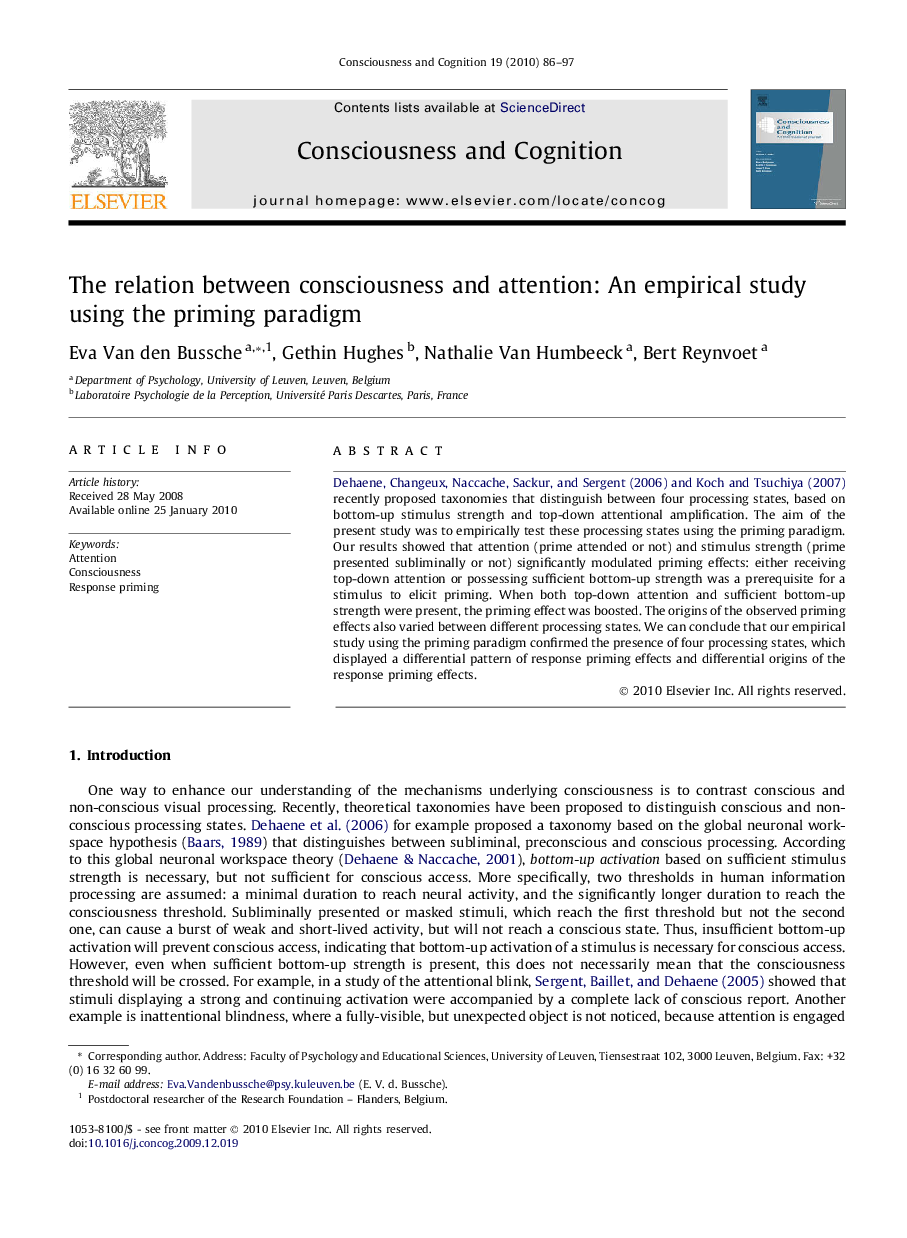| Article ID | Journal | Published Year | Pages | File Type |
|---|---|---|---|---|
| 10458762 | Consciousness and Cognition | 2010 | 12 Pages |
Abstract
Dehaene et al., 2006, Koch and Tsuchiya, 2007 recently proposed taxonomies that distinguish between four processing states, based on bottom-up stimulus strength and top-down attentional amplification. The aim of the present study was to empirically test these processing states using the priming paradigm. Our results showed that attention (prime attended or not) and stimulus strength (prime presented subliminally or not) significantly modulated priming effects: either receiving top-down attention or possessing sufficient bottom-up strength was a prerequisite for a stimulus to elicit priming. When both top-down attention and sufficient bottom-up strength were present, the priming effect was boosted. The origins of the observed priming effects also varied between different processing states. We can conclude that our empirical study using the priming paradigm confirmed the presence of four processing states, which displayed a differential pattern of response priming effects and differential origins of the response priming effects.
Related Topics
Life Sciences
Neuroscience
Cognitive Neuroscience
Authors
Eva Van den Bussche, Gethin Hughes, Nathalie Van Humbeeck, Bert Reynvoet,
